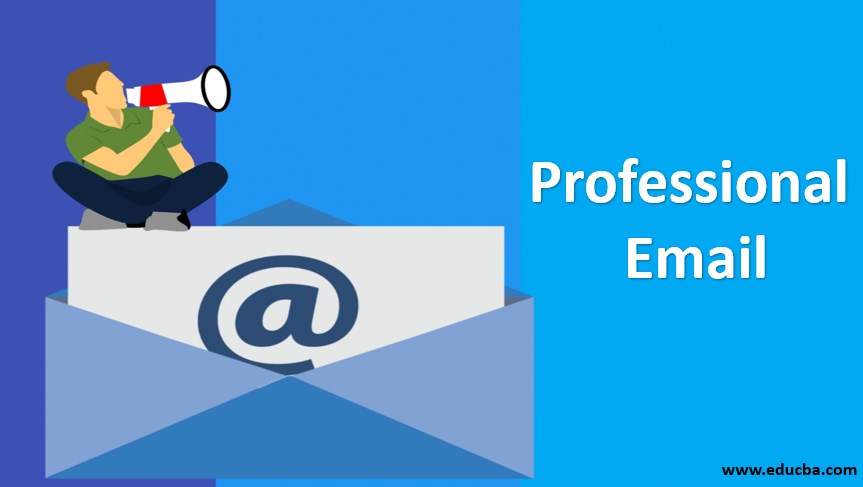Introduction to Professional Email
Emails have long since taken over the place of paper mail in our daily scheme of things. A desktop/laptop, Wi-fi connectivity or a dongle, and you are good to go. And the speed is an added asset. Over the past decade, the email has become the preferred mode of connecting with people set at distances apart. Why distances, some of us even email folks living in the house next to us! And before mobile messaging applications took over, emails were the only way we could plan picnics, get-togethers, parties, or share pictures or information with our friends or family.
Most of us know how to shoot off friendly emails at the drop of a hat, and prefer it as the faster and more convenient option to writing letters. And the fact that these informal emails follow no set rules of grammar or composition added to their popularity in no small measure. You don’t have to spend time pondering over how to frame a mail to your college gang or neighborhood buddies; you just write.
But professional emails are a different ball game altogether. Though less formal than the printed note or letter, these are nonetheless organized in their tone and texture and follow the rules of grammatical correctness.
Before we go into the details of writing an effective professional email format, let me take you through some possible purposes of such formal communication.
You could write professional emails for –
- Applying for a post, scholarship or grant.
- Requesting a permission or favour.
- Giving or requesting information.
- Requesting action on something.
- Replying to or acknowledging official communication.
- Writing about some issue you feel strongly about.
- Complaining about a service or product.
These are just indicative; the reasons for writing formal emails may be exhaustive. Since all these situations involve authority and office, it goes without saying that the tone and language must be carefully monitored. In short, time to mind your Ps and Qs.
So let us get down to the brass tacks. How do you go about structuring and composing an email in a manner that would be both engaging and effective? That is, how will you get your point across?
Let us reprise the seven C’s of communication:
- Completeness: Your communication must be complete in giving the required details and stating its purpose.
- Conciseness: It must be to the point, not rambling unnecessarily.
- Clarity: Your purpose must come through clearly.
- Concreteness: The message must be particular, with supporting facts and evidence.
- Coherence: Must make sense.
- Courtesy: Politeness and mutuality must be kept in mind.
- Correctness: The communication must be free of grammatical errors.
So keeping in mind the above criteria, your email should be a clear, complete, coherent document that should not ideally require a follow-up mail with explanation and instructions. Easier said than done, isn’t it? How many times have you sat down to compose that one accurate mail, and have later found it to be either rude and brusque or plain whining or pointless? I am sure we all have faced this kind of dilemma: whether to be crisp and direct or whether to be polite and roundabout.
7 Tips for Improving Your Professional Email
So let us start from the basics to improve your professional email.
1. Mentally reiterate the purpose of your mail
What are you writing the email for? What do you want the receiver to do? If you are clear in your mind about the expected response your email aims at, you can compose your message accordingly while utilizing cold email software to streamline your outreach and increase efficiency.
Image source: pixabay.com
Let me give an example.
Say Dorothy wants her College Dean to give her a recommendation for a scholarship. Her purpose in writing the email is to remind the Dean of her credibility as a student, her performance in college, and her overall sincerity. Now she has to state all these in the mail without coming across as bragging about herself or without seeming as too pushy. She also has to request her Dean to write the recommendation letter within a specific time. So her email’s purpose would be:
a) Stating her credentials as a student.
b) Informing her Dean about the scholarship she has applied for.
c) Getting the recommendation within such and such date.
Once she is clear in her head what she wants, she can go about composing the mail accordingly. Also, analyze your reader. Who is he/she? What is the reader’s reaction likely to be on reading your mail. Frame your mail based on this analysis.
2. Deciding the subject line
Let’s say you are sending a job application.
“Job opening” or “Marketing Trainee” in the subject line is too vague when you are sending an email application. You must specify the post you are applying for, along with the Division or Department or place of posting, if these have been specified in the recruitment advertisement, in the subject line.
Think of it as a one-line synopsis of your email. The subject tells the receiver what your purpose of sending the mail is. It also requests for a specific action, like:
“Participation in Seminar on ___________ (topic) at _________________ (venue) on __________ (date and time)”
Or
“Repairs and Maintenance of Desktop Computers – Request for Bids”
Such headings in the subject line inform the receiver of the requisite details, and follow the rules of clarity and conciseness discussed earlier.
3. Salutation and Greeting
Remember the lessons in politeness and courtesy taught to us in junior school? Yes, these are relevant even now. A business email address should always begin with a salutation.
“Dear Sir or Madam (as the case may be),” or “Hello Mrs. Merchant (if you happen to know the name of the recipient),”
When we write an email(informal mail), we get to the point directly, dispensing with the need to use Ps and Qs with friends. But professional emails are not complete without a proper salutation followed by a greeting or a polite opening, such as:
“Thank you for your invitation”
Or
“Warm Greetings”
Or
“We acknowledge your complaint and deeply regret your inconvenience”
Besides breaking the ice, so to say, such an opening also acknowledges the reader of the mail as an important person.
4. Composing the mail
This is technically the toughest part of the job, as this is the heart of the matter. Your email should follow the rules of grammar and have an opening, a body, and a concluding section. The opening section refers to previous correspondence, or action if any. It also states the purpose of writing the mail.
Image source: pixabay.com
Remember, executives receive mail by truckload these days, and reading through all of these is impossible. Most professionals scan through the subject and the opening section of mails, meriting a further look only if they find these informative and relevant.
So don’t wait until the last paragraph to state your purpose. Chances are the reader will give up before they reach that section. This is also precisely why brevity and conciseness are so important. Background information is important but please, please be brief. Come to the point as soon as you can.
Use bullet points if your email has a lot of factual data or information. These are easier to go through.
Highlight the relevant areas. Reading through these sections must tell the reader what you want.
Don’t be vague. State clearly what needs to be done. While it is not strictly possible to spell out terms in job applications, or requests for grants, remind the reader what you are writing for.
Your email needs to be brief and complete at the same time. Does it seem like a tall order? Not at all.
- Just make a list of the points to be included in the mail.
- Refer to the list to check that you are including all the points.
- Check for wordiness. Delete excess information.
- Make sure the email does not run into pages. If necessary, give supporting information in attachments (more on that later in this post).
- Ensure that your email doesn’t require to be followed up with bits and pieces of information in a later mail. Try to make the mail a complete correspondence in itself.
Always make sure to open and close the mail courteously. After the conclusion, close the mail with “Warm Regards”, or “Thanks and Regards”, or the conventional “Yours faithfully”, followed by your name. If possible, add your signature prior to your name.
Once the composing part is over, give yourself a pat on the back!. You are over with the tough part. What remains now, is revising and editing, and giving supporting information.
5. Use polite language and be to the point
Remember the “Cs” of conciseness and courtesy? Formal communication needs to be polite and impersonal.
“We would like to inform you that the last date of submissions is Oct 20, 2015. Please do send in your entries within that date.” Doesn’t it sound polite and clear? It also specifies the action required to be taken within the specified time.
Make a rough draft of your email and read it putting yourself in the position of the receiver. Are you sounding polite and courteous? Are you giving all the necessary details? Is your message to the point? Are you sounding earnest? (Red Alert! Casualness is okay with friends, not in the professional scenario, particularly when you are email writing to someone you don’t know as a person). So better take some email writing tips before you initiate to write any mail.
Read and revise your mail for possible grammatical and spelling errors and lapses in the information. If it is possible, get a third person to read and give feedback. An objective eye can often point out what you, as an involved party could not see.
5. Providing copies
In case your email requires coordination with or approval from other departments or officials, remember to mark a copy (cc) to them. Also, send yourself a blank copy (bcc) for future reference.
Be careful, however, not shoot off copies to unrelated people. This is most likely to happen when we are replying to group emails; we often hit the “reply all” button instead of replying to the sender solely.
In this age of information overload, the last thing a professional wants to have is an overflowing inbox with a lot of unrelated mail copies marked to him/her. J
6. Adding Attachments
If you are sending a job application or an information mail, you need to attach the relevant document(s) with your mail. A mail without the appropriate attachment is like an envelope without a letter!. A lot of time gets wasted when mails come without attachments. The receiver either is put off by the lapse or has to write back requesting the necessary information be sent. Then the sender sends another mail with the same.
So now you are all geared up and sit down to write. Let us revise the format for your ready reference:
- To: Recipient’s mail id
- From: Sender’s mail id
- Cc: (Copy to)
- Subject of the mail
- Salutation
- Body of the memo
- Closing
- Sender’s Signature and/or Name
This is a rough format; you can improvise as you familiarize yourself with the process. Before winding up, let me take you through the specifications once more:
- Use a brief, descriptive subject line.
- Greet the recipient with “Dear Mr/Ms….” or “Hi, ……”
- Be precise and to the point.
- Don’t use casual language, be formal.
- Close properly with your initials/name/signature.
- Copy to concerned persons.
- Support with necessary attachments.
So now that you have got sufficient inputs, get writing (or rather clicking), guys?
Recommended Articles
This is a guide to Professional Emails. Here we discuss an Introduction to Professional Email and the tips for improving your professional email. You can also refer to our other related articles to learn more –



